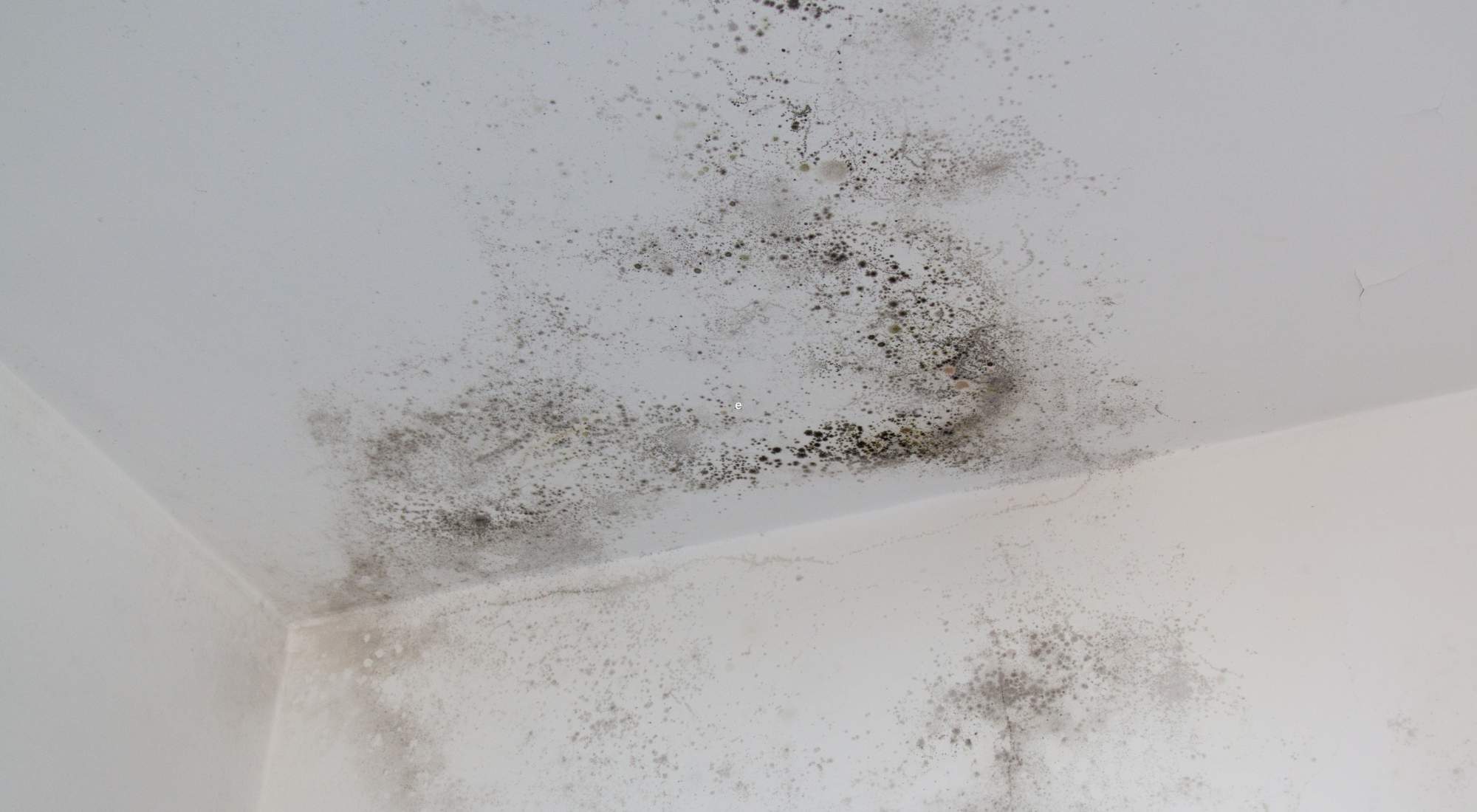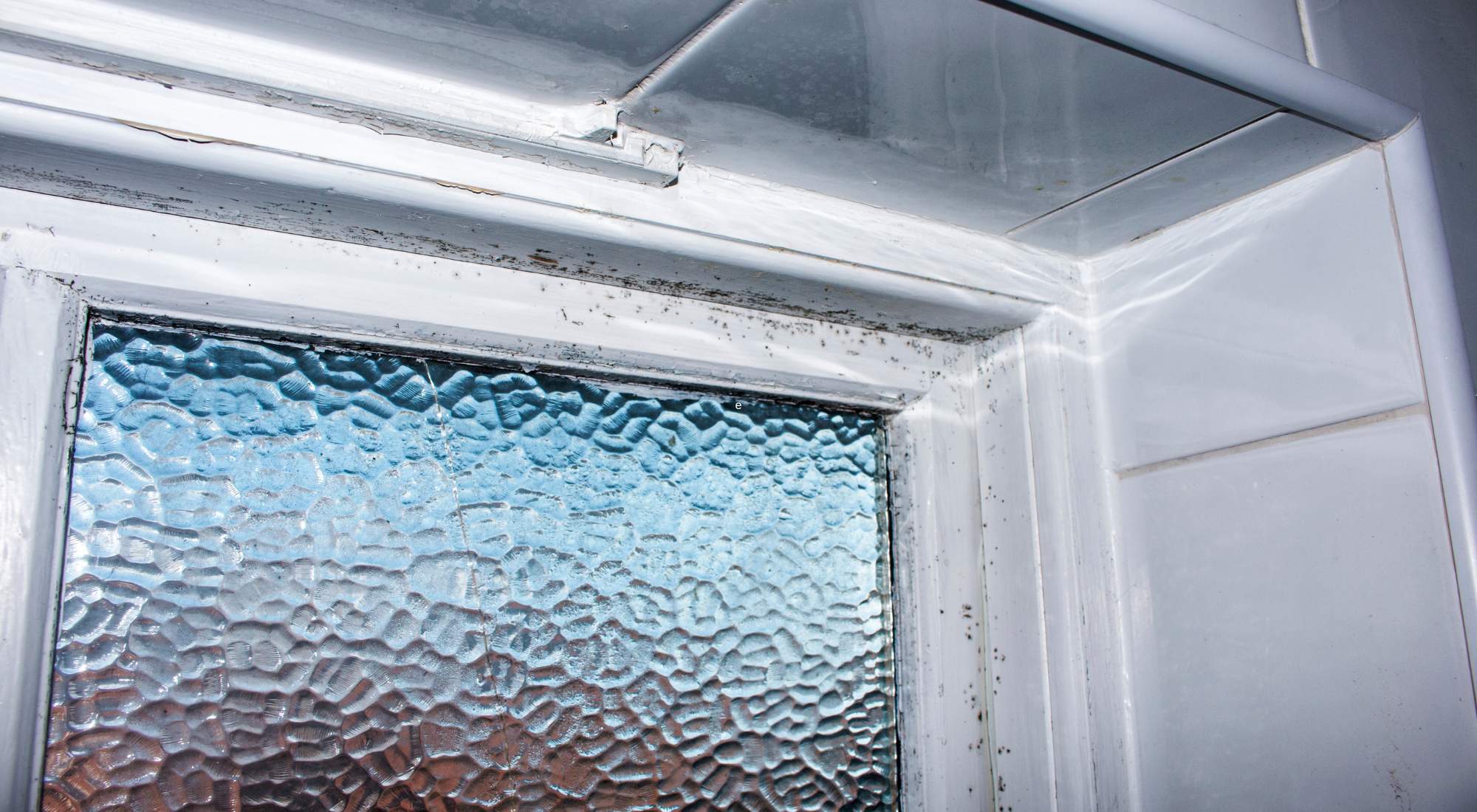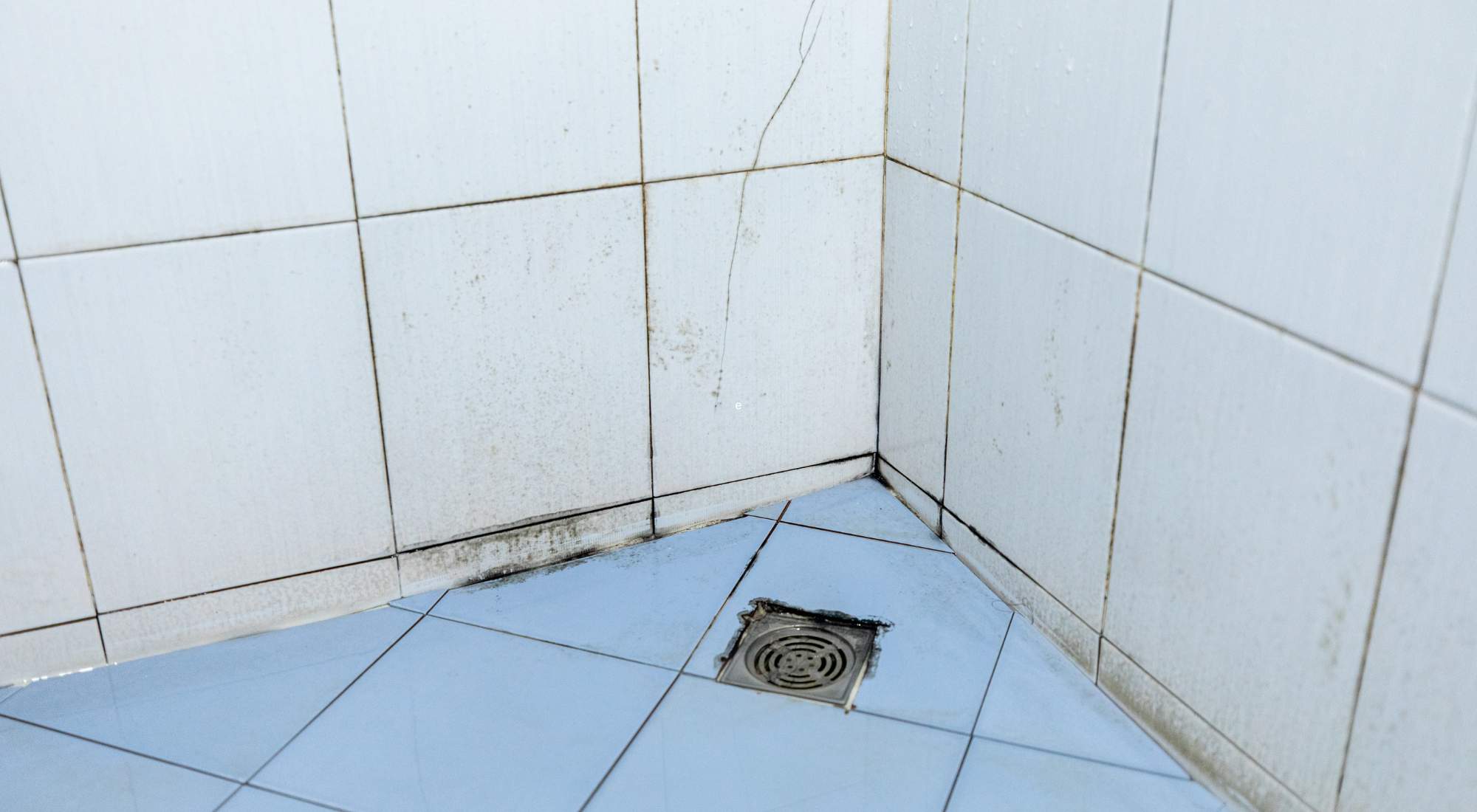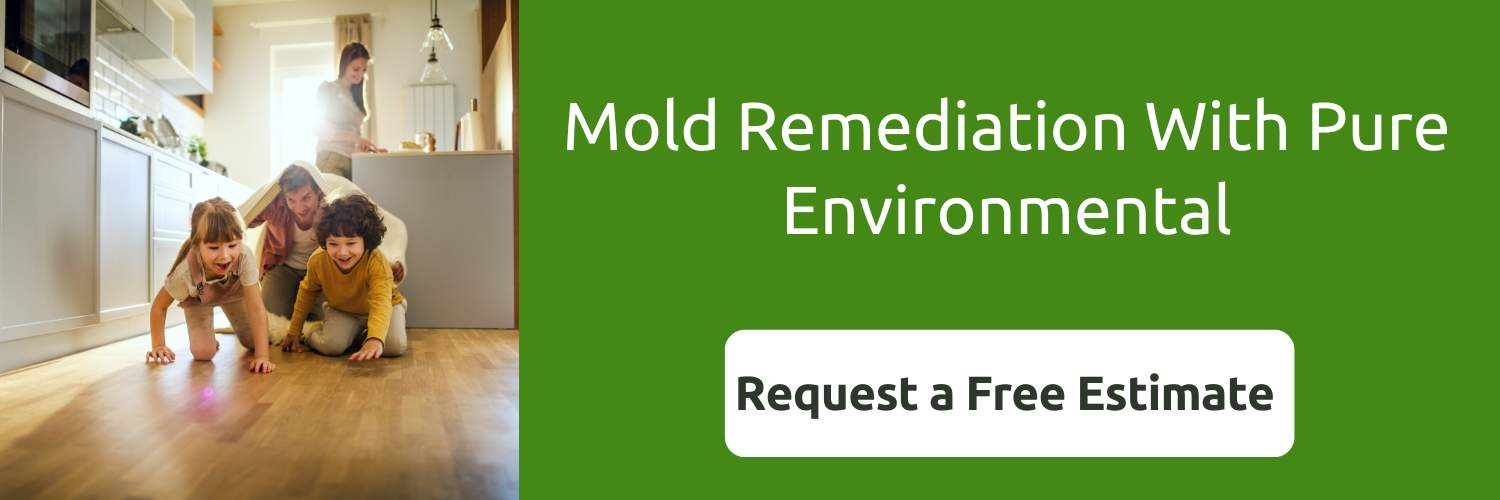A mold problem is a problem that you do not want to have in your house.
It is unsightly. It can cause structural damage to your home. It can harm the health of your household members.
With all those issues, you now have another — how do you get rid of it?
No one wants to have a mold problem. So it’s understandable that your initial reaction to treating mold may be the first cleaning product that comes to mind — Lysol.
So does Lysol kill mold? Yes, but killing mold will not completely get rid of it. Read more to find out why Lysol may not be enough to treat mold, and when you should seek professional help.
Table of Contents
- Does Lysol Kill Mold?
- Lysol Ingredients That Aid in Killing Mold
- Do Other Cleaners Kill Mold?
- Does Lysol Spray Kill Mold Spores in the Air?
- Using Lysol Vs. Professional Abatement: How To Know When to Call in the Pros for Mold
- When To Use Lysol (or Other Cleaners) for DIY Cleaning
- When To Hire an Abatement Professional
- An Ounce of Prevention Is Worth a Pound of Cure: 5 Tips To Keep Mold at Bay
- When Mold Rears its Ugly Head, Kill it at its Source With Pure Environmental – Mold Remediation Specialists in the Pacific Northwest

Does Lysol Kill Mold?
If you have a mold problem, you might find yourself ready to pick up a bottle of chemical cleaner and go at it. You’re already opening your cleaning cabinet (we know everyone has one), before you ask yourself, “Wait, does Lysol kill mold?”
The answer is: yes, Lysol can kill mold but a lot of things can kill mold.
Mold is a type of fungus and a very common resident of planet Earth. It can be found anywhere there is moisture and oxygen present. It feeds off damp and decaying matter. It is composed of millions of microbial organisms, and like bacteria, it doesn’t like anything that could upset its colony. Chemical agents, natural agents, and even your saliva could harm mold.
But just because mold is so common, it doesn’t mean it’s okay to have it in the house.
Mold allergies are common and uncomfortable. Some species of mold can cause prolonged respiratory issues if overexposed. Dead mold can cause allergies and health issues. So if you have mold: it needs to be removed, not just killed.
Lysol, like many other mold killers, will not eradicate the mold. Even if you kill it — it can come back.
Lysol Ingredients That Aid in Killing Mold
Active ingredients in hydrogen peroxide that may kill mold are:
- Hydrogen peroxide
- Potassium hydroxide
- Ethanol
- Isopropyl alcohol
These ingredients kill microorganisms, that includes mold. Unfortunately, it only kills mold on the surface. There are still mold spores in the air. Those spores will land and live off the same conditions that caused the prior patch of mold to grow.
Do Other Cleaners Kill Mold?
Generally, just about any cleaning agent can kill mold. Other cleaning agents that can kill more might be:
- Baking soda
- Vinegar
- Bleach
- Borax
- Other OTC disinfectants (Clorox, Simple Green, Method, etc.)
Killing mold does not remove it. If the spores in the air and the environment that caused the mold continue to live, then the mold will return.
Does Lysol Spray Kill Mold Spores in the Air?
Mold spores in the air are one of the reasons mold will return even after it is killed.
Lysol and other disinfectants are surface cleaners. They kill microorganisms on the surface. Just like you can’t spray disinfectant into the air to kill airborne germs like COVID-19, you can’t use Lysol spray to kill mold spores in the air.
Using Lysol vs. Professional Abatement: How To Know When To Call in the Pros for Mold
Consider these factors when deciding if it’s time to take more extensive measures for your mold problem:
- Where is the mold?
- How much mold?
- Is the mold spreading to other areas?
- What kind of surface is the mold on?
We know killing the mold only holds it off until it regrows. When it regrows it could spread and infect other areas. You might soon find that the one small mold colony, if not removed, can spread and colonize your entire house.
So it is important to know when you can take measures into your own hands and when it is time to call in a professional. Pure Environmental uses environment-friendly technology to eradicate mold at its source.
When To Use Lysol (or Other Cleaners) for DIY Cleaning
The type of surface the mold is growing on is important. Porous surfaces may be more difficult to get rid of mold and Lysol or cleaning agents will not remove it. Mold feeds off of moisture and decaying matter. Surfaces that have eroded are feeding the mold and should be abated by a professional.
Surfaces that Lysol may be used to treat mold might be…
- Tile
- Around windows
- Metal
- Marble
Surfaces that Lysol alone may not be able to treat mold might be:
- Wood
- Plaster
- Drywall
- Wallpaper
- Carpet
How To Use Lysol for Maintenance Cleaning
Prevention is the best mold treatment. Lysol can be a great cleaning agent for routine home maintenance. It is recommended that you use surface cleaners, like Lysol, regularly to prevent mold.
But what if you have a small patch of mold that may not need the help of a professional?
In cases where the mold may be treated with Lysol, you could take these steps to kill mold:
- Remove any objects that have come in contact with the mold spores and dispose of them.
- Clean the affected areas with soap and water. Dry the area with a clean towel.
- Spray affected areas and let it sit for 15 minutes.
- After 15 minutes, use a scrub brush to scrub the mold off. Once you have successfully removed the mold from the surface, you can wipe the area.
- Spray the area again and let it sit for 10 minutes.
- After 10 minutes and then wipe away.
If the mold persists, you may have a bigger problem contributing to the infestation. A problem that cannot be treated with Lysol alone.

Other Methods/Products for Regular Maintenance Cleaning
Any cleaning agent that will upset the pH balance of the mold colony can kill mold. Most molds survive in a colony with a pH balance ranging from 2 (acidic) to 9 (7 being neutral pH). Any cleaners that have a more alkaline or more acidic pH than the mold will upset the balance and growth of the mold colony.
You could use these cleaning agents to kill mold:
- Baking soda:
- Dissolve baking soda with water in a spray bottle.
- Spray affected areas and scrub until the substance is removed.
- Wipe the area dry.
- Vinegar:
- Combine vinegar and water in a spray bottle.
- Spray the combination onto affected areas.
- Let it sit for one hour.
- Scrub until the substance is removed and wipe the area dry.
- Repeat steps three and four if unsuccessful. Remember, vinegar will not remove mold stains.
- Borax:
- Use one cup of borax per one gallon of water.
- Combine and dilute water and borax.
- Apply the solution and scrub with a scrub brush.
- When mold has been removed from the surface, wipe it dry,
- Do not rinse off the borax, and let the surface air dry.
- Hydrogen peroxide:
- Pour 3% hydrogen peroxide into a spray bottle. Do not dilute it.
- Spray hydrogen peroxide onto affected areas.
- Leave it to sit on the surface for 10 minutes.
- Scrub the area until the substance is off.
- Wipe the surface dry.
- Do not rinse the hydrogen peroxide off the surface. Let it air dry.
When To Hire an Abatement Professional
Over-the-counter cleaning agents may kill mold, but these products will not completely get rid of it.
Mold can spread quickly and the spores can travel through your air conditioning to other parts of your house. Mold can even thrive behind your walls and snack on the wooden foundation of your house. Decaying foundations caused by mold may weaken the structural integrity of the building.
Structures affected by mold must be removed and the mold must be remediated. This could mean the removal of walls, flooring, and more.
If you have an untreated mold problem, you may be risking your health and the health of your family if it is not properly removed.
Mold exposure can cause allergies and asthmatic episodes for those with mold allergies or asthma. Mold can also cause respiratory issues for those who are not allergic or asthmatic.
Signs you may need professional mold remediation:
- Mold has a distinct scent. It smells damp and musty. If you suspect an area has this distinct and persisting scent, you may have a mold problem.
- There has been recent flooding or a pipe has burst. Any event that has caused standing water may necessitate mold removal if the water damage has not been properly treated.
- Excess humidity. Areas that are exposed to excess humidity are the ideal environments for mold to thrive.
- Concurrent respiratory issues are a sign of a mold problem. If the people that frequent the mold-infested area develop respiratory infections or allergies frequently, this could be a sign of a serious mold issue.
- Visible mold growth or stains.

An Ounce of Prevention Is Worth a Pound of Cure: 5 Tips To Keep Mold at Bay
The best mold treatment is prevention.
This is especially important if you live in areas where mold thrives. Mold loves humid and wet climates because there is plenty of moisture.
Natural disasters can’t be helped. Pipes burst, basements flood, and sometimes you just forget to turn on the shower fan a few too many times.
Whether the presence of mold is by accident or sheer bad luck, you can prevent it, or lessen its effect, with these tips.
#1: Clean Your Shower Regularly
Routine cleaning is a must for mold prevention, especially in areas that are exposed to water or humidity.
Other prevention methods relating to the shower are:
- Remember to turn on your bathroom fan when showering. Bathroom fans reduce steam and keep your bathroom well-ventilated while showering. This reduces humidity damage and the growth of mold.
- Keep a squeegee handy. Use a handheld squeegee to wipe away water from your shower walls after showering. This prevents mold from growing in your shower.
#2: Clean Leaks and Spills Immediately To Avoid Pooling (and Repair Them While You’re at It)
Mold thrives off of moisture.
Standing water and spills from a broken or leaky pipe provide the ideal environment for mold to grow. Avoid mold by monitoring your pipes and ensuring that they do not leak. Pipes can sometimes burst, when this happens it is paramount that you get them repaired immediately.
#3: Use a Dehumidifier or Sump Pump
Dehumidifiers control the moisture in the air and prevent mold from growing.
Certain climates are more humid than others. If you live in an area that is affected by moisture it may be recommended to use a dehumidifier in the areas most vulnerable to humidity. Depending on how humid the area is, expect to empty the dehumidifier bucket every day or two.
Sump pumps prevent standing water in areas of your home that are prone to flooding.
Areas prone to flooding, like basements, may need a sump pump to remove standing water over drains. When a sump pump is coupled with a dehumidifier, it can remove excess moisture from the air.
#4: Maintain Your Roof and Gutters
Mold loves water damage from leaky roofs and unmaintained gutters.
Water damage can cause mold to flourish. Keep your roof fortified and your gutters cleaned to avoid mold caused by water damage.
#5: Vent Your Dryer to the Outside of the House
Dryer lint buildup can be an unsuspecting cause of mold.
Dryers are a great source of condensation, lint, and heat–preferable conditions for mold to form. If your dryer is not vented to the outside of your house, or correctly venting, it could cause mold. Also, keep up with lint removal and maintenance on your dryer to prevent mold from growing in your laundry room.
When Mold Rears its Ugly Head, Kill it at Its Source With Pure Environmental – Mold Remediation Specialists in the Pacific Northwest
There are so many good things about living in the Pacific Northwest, but mold is not one of them.
At Pure Environmental, we love the area just as much as you do. But we understand how the humid climate can affect our properties.
Over-the-counter products, like Lysol, will not get rid of mold completely. Mold is like a mythical hydra. If you try to cut off its head with Lysol or other cleaning agents: it’s going to grow back and then some. And the longer the problem persists, the more damage the mold will cause.
Killing mold will not get rid of it. You need to remove mold at the source.
We are Pure Environmental, and we are here to be the Hercules to your hydra of a mold problem. Contact us today to get a free estimate.
Recent posts
- Advice From the Pros: How To Hire a Contractor for Home Renovations
- After the Fire: What To Expect From Smoke Damage Restoration Services
- Home Insurance During Renovations: What Is Covered and What To Know Before Getting Started
- Mitigation and Restoration: Understanding the Difference Between the Two and Why They’re Both Necessary
- Should You Stay or Should You Go? Know When To Walk Away From a House With Mold
